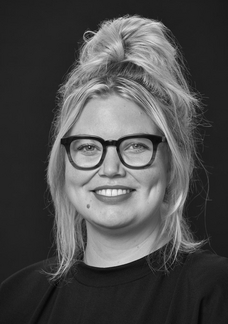Master in Landscape Architecture
Landscape Architecture is sometimes described as ‘drawing in the topography’, but the profession encompasses much more. During the Master’s programme at the Amsterdam Academy of Architecture, you will acquire the knowledge, insight and skills that make it possible to solve spatial problems through design and to shed light on new topographical situations. This will take place at different scale levels, from garden to region.
You will not only learn to reconcile new elements such as water, infrastructure, buildings or greenery with the existing qualities and possibilities of the natural and historical environment, but also how to set a process in motion which an increasing amount of parties will latch on to. Research is an important part of the work, as genuine understanding and innovation can arise from this. That also means gaining understanding of other factors than the spatial one: the users, the creators and the managers. Above all, the landscape architect is explicitly aware of the influence that the time factor has on the quality of the environment, and can let this do its work. By introducing the right basic conditions, a high-quality outdoor environment is created.
Course overview Landscape Architecture 22-23
OUR MISSION: BUILDING TOWARDS A SUSTAINABLE FUTURE
The world around us is constantly changing and at a rapid pace. We are facing major, cross-border and wide-ranging questions. The challenges – related to climate change, resource scarcity, energy transition, social inequality and declining biodiversity – are urgent, complex, and also all spatial issues for which answers must be sought now in order to maintain perspective on a sustainable and inclusive future.
CURRICULUM
The three study programmes have the same structure. In the six teaching semesters prior to graduation, three forms of education are offered parallel to each other:
- Projects (indicated in this guide with P from the Dutch 'Projecten')
- Research (indicated in this guide with O from the Dutch 'Onderzoek')
- Lectures (indicated in this guide with C from the Dutch 'Colleges')
These three forms of education are supplemented with:
- Form Studies (V) in semesters 1 to 3
- Tools in semester 1 and 2
- the Winter School between semester 1 and 2, 3 and 4, 5 and 6
- the Reflection Clinic and Graduation Clinic in semester 4, 5 and 6
- elements from the elective programme.
Attention is not only devoted to the development of knowledge and skills with these educational components, but students also actively work on their own portfolio.
PROFESSIONAL EXPERIENCE
Acquiring relevant professional experience is part of the study programme at the Academy of Architecture. Practical work experience is gained simultaneously with the study: concurrent education. Generally speaking, this means that an architecture student will work at an architectural firm, an urbanism student will work at an urban design firm or urban planning department, and a landscape architecture student will work at a landscape architecture firm or in a department where relevant landscape design work is carried out.
It is also possible to work for multiple employers on a freelance basis in the discipline the student is studying. Students are allowed to combine their studies at the Academy of Architecture with their own practice or business. The condition, in that case, is that the student submits a written request beforehand detailing the work that he or she will perform, accounting for the amount of time they will spend on this work, explaining which professional qualifications will be developed with this, and identifying the mentor who will supervise this work. In addition, the student will explain why the workplace meets the qualitative demands of the Academy. After approval from the study programme, the student can include this practical and professional experience in the practice records for assessment.
SEMESTER 1
P1a (AUL) Place
P1b (UL) Scene
O1 (AUL) Methods
V1a (AUL) Natural Matter
V1b (AUL) Inspirational Matter
Tools 1+2 (UL) Landscape analysis / Urban space
C1 (AUL) Foundations and Reflection
SEMESTER 2
Winter School (AUL)
P2a (L) Interbeing
P2b (AL) NatureCulture
O2a (L) Ecology and Biodiversity
O2b (AUL) Ecosystems and Reflection
V2a (AUL) Self-Growing Matter
V2b (AUL) Technical Matter
C2 (AUL) Book and Debating Club
In the fourth year, the graduation process begins. Our Academy's Landscape Architecture learning outcomes are as follows:
DISCIPLINE
- The ability to design spatial plans and concepts at different scale levels for the development and layout of the outdoor space that satisfy both aesthetic, as well as technical and functional requirements;
- Appropriate knowledge of and insight into the the international history and theory of garden and landscape architecture in connection with the visual arts and the other architectural discipline;
- Appropriate knowledge of and insight into the construction and development of the outdoor space, and the abiotic, biotic and anthropogenic processes that form the basis thereof, as well as the ability to apply that knowledge;
- Appropriate knowledge of and insight into the material and immaterial significance of the outdoor space and the effects of changes therein for humans and society;
CONTEXT
- Appropriate knowledge of and insight into the design and execution of planting schemes and the civil-engineering aspects of the outdoor space, as well as the ability to apply that knowledge;
- Ability to make spatial plans clear to others visually, orally and in writing in an interdisciplinary, international and/or intercultural context;
- Appropriate knowledge of architecture and urbanism, and their relationship to landscape architecture;
- Appropriate knowledge of and insight into nature, spatial planning, land use and environmental legislation, the accompanying processes and the procedures of decision-making in the Netherlands;
- Appropriate knowledge of and insight into the planning process in terms of its most important components: assessment and analysis, formulating goals and programming, spatial design and evaluation, as well as the ability to apply that knowledge;
PROFESSION
- Insight into the profession of garden and landscape architect and the role of the garden and landscape architect in society in the Netherlands and abroad;
- Appropriate knowledge of and insight into the techniques relevant in order to make plans concrete.
Career perspectives
After the Master’s programme in Landscape Architecture, you will have access to a broad and well-grounded range of design and research tools and you will be able to operate as a landscape architect both nationally and internationally. Moreover, you will be able to effectively collaborate with other disciplines in the design, planning and implementation process as an independent designer within a bureau, or you can begin your own bureau.
Sustainable transformation of the daily living environment
Landscape Architecture is a discipline with a broad orientation, focused on sustainable transformation of the daily living environment. In part because of this, the landscape architect has been given an increasingly important role within the process of spatial planning and the layout of public space in recent years. As a design-based discipline, landscape architecture is strongly related to architecture, urban planning, agricultural engineering and civil engineering.
EMiLA: European Master in Landscape Architecture
EMiLA (European Master in Landscape Architecture) offers landscape architecture students the opportunity to learn about the profession in the European context and to gain teaching experience abroad. The aim is to gain a better understanding of the major European themes for landscape architecture and learn about the different approaches to the subject. Students learn how political differences within Europe affect the landscape and gain insight into cross-border landscape cooperation.
If you choose the EMiLA programme as a Landscape Architecture student, you will not attend classes at the Academy of Architecture in your second year of study, but two semesters at two schools of your choice instead. In addition to the programme at these participating institutes, you will follow a Summer School programme and an e-learning programme.
EMILA (European master in Landscape Architecture) is a mutual exchange programme for landscape architecture students from five landscape architecture schools in Europe. The five schools are: École Nationale Supérieure de Paysage (Versailles), Fakultät für Architektur und Landschaft, Leibniz Universität (Hannover), Academie van Bouwkunst Amsterdam, Universitat Politècnica de Catalunya (Barcelona) and the Edinburgh College of Art, University of Edinburgh.
Each school has determined its own admission requirements appropriate to the study programme. With regard to students of the Amsterdam Academy of Architecture, they may participate after successfully completing the first year of the Master in Landscape Architecture.
If you choose the EMiLA programme as a Landscape Architecture student, you will not attend classes at the Academy of Architecture in your second year of study, but two semesters at two schools of your choice instead.
You enter the current programme of the schools, and take part in the annual Summer School, which is organised each year by one of the participating schools and in which non-EMILA students can also participate. In addition, you follow an e-learning module, to be completed individually, on the website of EMILA. In this module, an exchange of knowledge and information takes place between all EMILA students under the supervision of the lecturer.
For more information, have a look at the EMiLA website!
Landscape Architecture at our Academy
The Landscape Architecture degree from the Amsterdam Academy of Architecture gives graduates the right to independent professional practice as a Landscape Architect and meets the admission requirements of the various registers that are formulated in the Dutch Academic Titles (Architects) Act. The graduate has direct access to the Dutch Register of Architects. The Amsterdam Academy of Architecture stimulates its students to get the maximum out of their talents. This results in an exceptionally high level and the work of students from the Academy is regularly awarded the Archiprix or other prizes.
Interdisciplinary and international
Architecture, urban design and landscape architecture are independent disciplines, but are inextricably linked with each other at the same time. The Amsterdam Academy of Architecture is the only Dutch design study programme that offers these three spatial disciplines in combination. By focusing on the essence and skills of your profession and, at the same time, partly working in interdisciplinary groups, you will be prepared for an integrated professional practice in the current field of work, where there is an increasing demand for your specific design skills within blurring boundaries. Working within an international context is also becoming increasingly important. The Academy also maintains an active network of foreign study programmes, through which students and lecturers are exchanged on a small scale, and is a member of the European Association of Architectural Education (EAAE).
Inspiring environment
The Amsterdam Academy of Architecture is a small-scale study programme in the centre of the city. All the elements of the urban landscape that are studied and taught here can be recognised in the context that surrounds us. In this way, the city and the surrounding landscape become your laboratory, as a social structure, historical artwork and enduring design assignment. At the same time, the work of the students is also valuable to the environment itself. Through the designs that the Academy places on the agenda and the designs that the students make, we create a parallel reality time and time again, which can hold its own in terms of power of expression.
Image in header: Stadswildernis by alumnus Mark Vergeer.
![[Translate to English:] [Translate to English:]](/media/avb/_processed_/9/b/csm_3-Mark-Vergeer-Stadswildernis-Academy-of-Architecture_e8573a6817.jpg)





